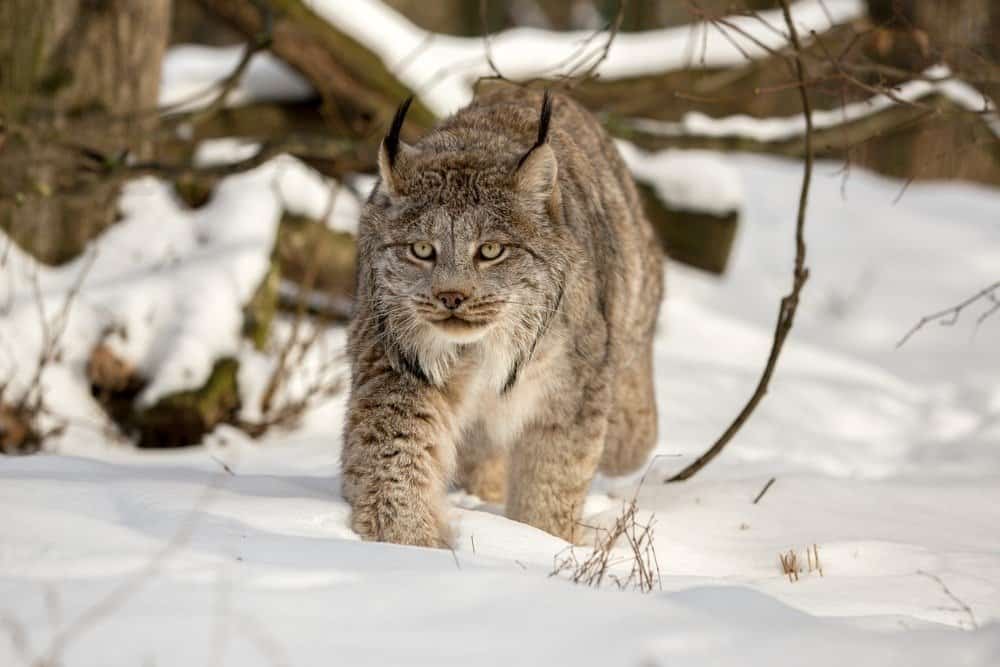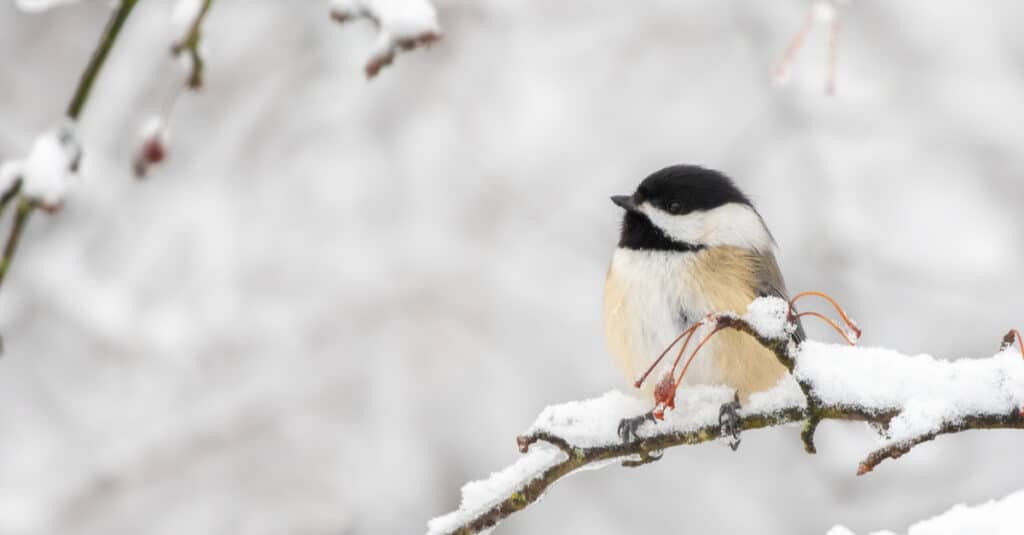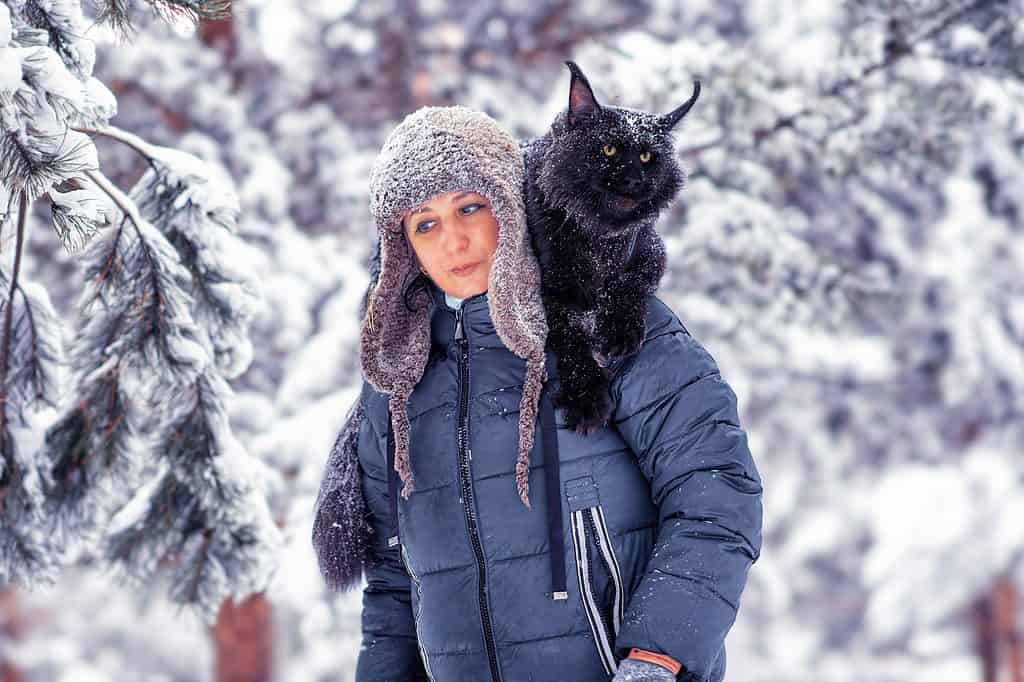Maine, also known as the Pine Tree State, is famous for many things. Some of the most notable include its delicious lobsters, stunning rocky coastline, picturesque lighthouses, and exciting outdoor recreational opportunities. Tourists troop into the state in thousands to enjoy amazing cuisines, participate in winter sports, and explore the region’s beautiful attractions. The state can get very cold, although not like Antarctica’s. Its frigid temperatures and icy waters are some of the prominent things that make Maine stand out. With an average annual temperature of 44 degrees Fahrenheit, the federal state is one of the coldest in the US. There are records of outrageous sub-zero temperatures taken from different locations within the geographical area. The coldest temperature ever recorded in the Pine Tree State was an astonishing -50 degrees Fahrenheit in 2009, and Maine’s coldest average January temperature on record was in 1920.

©Thomas J. McLaughlin/Shutterstock.com
The Coldest January in Maine
Although average temperature measurement varies from year to year, Maine’s January weather can be described as a cold, snowy winter. The temperature starts plunging at the start of winter in December, and it’s coldest during the first month of the year.
Based on historical data from the National Center for Environmental Information’s official website, the coldest January on record in Maine was the January of 1920. That year, the average temperature for January was 3.8ºF for the entire month. In addition to being the lowest monthly average temperature ever recorded in Maine, the reading also shows the highest deviation from a 100-year average reading of 13.2°F for the state.
Maine has also had the lowest average January temperature reading for the past 128 years compared to any other state in the contiguous United States. This means the state has experienced the coldest January on record in the country.
If we narrow the records a little to the past 100 years alone, then the title of the coldest January in Maine would go to the January of 1994, with an average temperature of 4.2°F. This is the coldest average January temperature in the past 100 years.
Coldest January Temperature Ever Recorded in Maine
While January 1920 and 1994 may hold the record for the first and second coldest Januarys in Maine’s weather history, there are other dates worth mentioning as far as the extreme cold weather in Maine is concerned.
The January of 2009 was a particularly remarkable one. It is the month where the coldest-ever temperature in Maine (and all of the northeast region of the United States) was recorded.
The United States Geological Survey (USGS) has a couple of temperature measuring equipment at their stations all over the country. One of them, sited at the Big Black River area, a few miles away from Allagash in Maine, picked up a record-breaking -50°F. The reading was recorded on January 16, 2009.
The -50°F reading required multiple equipment tests to verify. A Records Verification Committee was set up to confirm that the sub-zero value was not a mistake or the result of an instrument malfunction. The reading was confirmed to be accurate, and it became the official coldest temperature ever recorded in Maine. This new record immediately offset the previous one that was taken 84 years earlier. Before 2009, the lowest temperature was -48°F from a site near Van Buren.
The coldest temperature ever recorded in the entire New England is still -50 degrees Fahrenheit. However, Maine cannot lay sole claim to the lowest temperature in the district. Vermont also recorded a temperature of -50°F in December 1933.

©iStock.com/jpbcpa
January, Maine’s Coldest Month of the Year!
Of all the winter months in Maine, January is the coldest. Over the years, most of the extreme freezing temperature readings have been in Maine. Many towns within the state are at their coldest during this time of the year.
As expected, January is usually the time of the year when snowfall is at its peak. The average January snowfall is about 20 inches. That’s quite much if you compare that with the total 50 to 70 inches annual average of snowfall the whole state receives at its coasts and the 60 to 110 inches in the inland area of Maine.
Wildlife in Maine
The official state animal of Maine is the moose, the official crustacean is the lobster, and the official cat is the Maine Coon. Fifty-eight species of wild mammals can be found in Maine. The state has a thriving wildlife population mainly tied to its geographical location.
The northern side of the state has conditions similar to Canada and can support animals like the Canada lynx. The southern section has enough deciduous vegetation to serve as suitable habitat for southern species. Notwithstanding, a few species have been either expropriated or gone extinct. Golden eagles, black terns, and other species are presently listed as endangered in Maine.
Maine is home to several native animal species, including the black bear, lobster, and white-tailed deer. The population of bears and moose in the state is stable and probably one of the largest in the country. Mammals like beavers, foxes, coyotes, raccoons, and weasels also live in Maine’s forests. Tourists often hunt and trap many of Maine’s native mammals, with bears, moose, and white-tailed deer being the most popular game. However, these activities are regulated to prevent the possible extinction of these species.
Chickadee is the official bird of Maine. The bird is famous for its distinctive sound and is a common sight throughout the state. Other popular birds you may spot in Maine are songbirds, lake birds, and seabirds. The aquatic species of the state are made up of freshwater fish, marine water fish, lobsters, shrimps, clams, and whales.

©Felineus/Shutterstock.com
How Animals in Maine Cope With Cold
Surviving the winter can be more challenging in Maine because of how intense the cold can get. Humans have warm protective clothes and heaters to help them adapt. Animals in cold regions like this have also evolved to cope with the cold season in their own way. They either migrate to warmer areas or hibernate throughout the winter season.
Many bird species change location to the south before the intense cold hits. The chickadee, however, bravely stays behind. Maine’s official bird has a unique adaptation that allows it to survive the harsh winter months. It can conserve energy by lowering its body temperature.

©Mr.Coffee/Shutterstock.com
The animals that hibernate store up enough food in their fat reserves and go into a state of deep sleep (hibernation) throughout the season. The woodchuck, bat, and jumping meadow mouse hibernate in winter to wake up when the weather starts to warm up. They are the only true Maine hibernators. Beavers hide away in their lodges which they have previously stocked with enough food. Black bears, on the other hand, do not fully hibernate; they remain inactive for most of the winter, unless disturbed. They lower the rate of their heartbeats to 10 per minute and reduce their oxygen intake as coping mechanisms while they sleep.
The active animals have thick furs and deploy other special tactics to help them survive. Maine Coons, the official cat of the state, can survive the winter without hibernating at all. Unlike other cat breeds, they have thick, waterproof furs and extremely bushy tails.

©Sergey Ginak/Shutterstock.com
Conclusion
Maine is a beautiful state for outdoor enthusiasts. While the cold winter weather may be challenging for some, it’s also a great place to live. The state is also one of the best places to live and is ranked one of the safest places to live in America, according to the US News and World Report. Of course, you’ll have to brace yourself and prepare adequately for the chilly winter months, especially in January.
Up Next
- Discover Arizona’s Coldest January on Record
- Florida’s Coldest January on Record
- Discover the Coldest Place in Maine (-50°F!)
The post Discover Maine’s Coldest January on Record appeared first on AZ Animals.
from Animal News, Facts, Rankings, and More! - AZ Animals https://ift.tt/wdopsCg